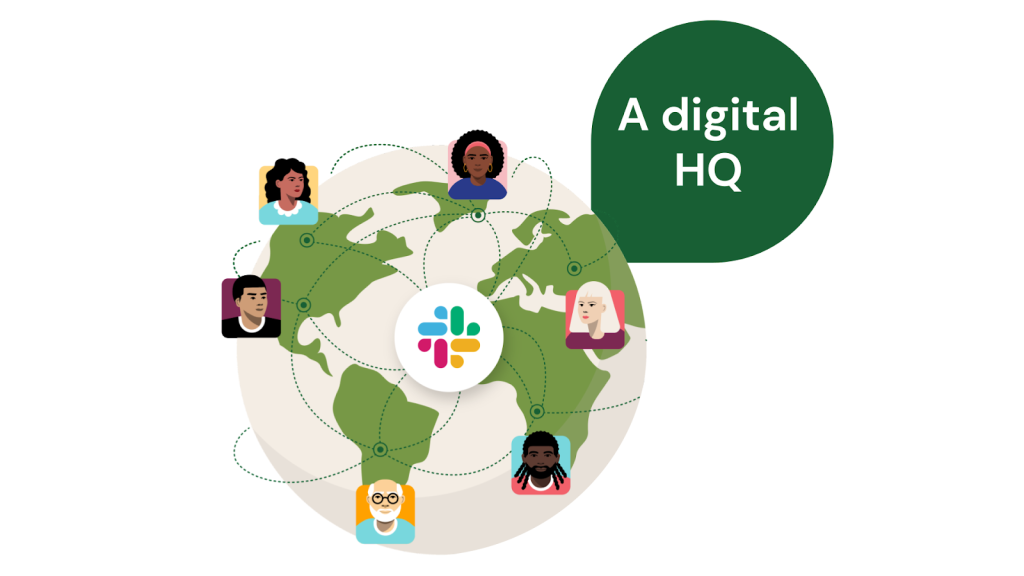Today’s hybrid working model comes with a new set of challenges, like balancing employee wellbeing with data security and compliance outside your office walls. But this model has enabled organizations to provide increased flexibility in this new digital-first world.
Now, organizations are transforming by:
- Finding new ways to build company culture with a distributed workforce
- Removing structured workdays in favor of flexible working hours
- Allowing employees to work in the office, in a hybrid environment, or fully remote
It is not about simply replicating our traditional physical ways of working in the digital world. This requires a mind shift as Bret Taylor, Co-CEO of Salesforce said: “Our mindset about work has shifted from a place you go to something you do.”
The pressure is now on central IT to make this digital-first world a reality. According to MuleSoft’s 2022 Connectivity benchmark report, central IT is viewed as the driving force behind transforming old business practices in the digital-first world, with business teams asking IT to complete 40% more projects this year.
With so much being asked of IT teams, automation is critical to ensure IT can deliver these digital experiences for the business. Let’s dive in to see how organizations can enable their teams to be more collaborative, productive, and efficient with easy-to-use automation capabilities within a digital HQ.

What is a digital HQ?
A digital headquarters, or HQ, is a digital place that is connected, flexible, and inclusive for everyone to be a part of and contribute to regardless of location. A true digital workplace isn’t defined by where people gather, but by how they feel included in the collectively shared mission of a company.
Slack has reimagined the digital HQ to be a place where collaboration, connection, and work happens for everyone. It’s where employees engage, collaborate, and get work done together.
The digital HQ is designed to do three things:
- Break down silos: The digital HQ is a space without silos for everyone where employees share knowledge, culture, and identity.
- Embrace flexibility: Make decisions and get work done faster because you have new ways of working that are flexible to your work style.
- Automate work: Everyone can automate tasks that take away time from deep, meaningful work or time you can be spending with your team and customers.
The Salesforce Customer 360 is the engine that powers the digital HQ with a single source of truth to drive productivity and growth with tailored solutions for every line of business (LoB) and industry. MuleSoft enables that single source of truth by allowing you to integrate everything and automate anything using Anypoint Platform.
See the connected digital HQ come to life in the video below.

How to build your connected digital HQ with MuleSoft and Slack
MuleSoft and Slack – as part of the Salesforce Customer 360 – bring connectivity and digital experiences to a whole new level, for example: “Streamlining sales operations by integrating and automating your ERP system like SAP or Oracle with Salesforce Sales Cloud and keeping your account teams up to date of any issues via Slack. Or enhancing the employee experience by automating onboarding for new hires by automatically syncing new profile data from systems like Salesforce, Netsuite or Zendesk to Human Capital Management (HCM) systems like Workday or SAP SuccessFactors, all without leaving Slack.”
These technologies connect your apps, your people, and your digital HQ. Take Qumulo, a cloud data storage platform that provides customer support with a human touch. Qumulo was forced to innovate fast in order to scale its support function.
With the help of consulting firm Traction on Demand, Qumolo’s customer service agents are able to access customer data and support history from Salesforce, Zendesk, and PagerDuty all from a simple slash command within Slack. This connectivity and integration has reduced the search time for Qumulo service agents from 2.5 minutes per case to seven seconds. They also save 141 hours per year by not having to switch between systems to look up customer account information.
Let’s explore what users can do with MuleSoft and Slack together.
Build secure integrations that scale with your business
Securely integrate all your apps directly into Slack by leveraging our out-of-the-box MuleSoft Slack Connector to build extensible integrations that connect all your existing and future systems directly into Slack, just like the service team at Qumulo.
Use Slack to automate multi-system workflows
Once all your systems are connected to each other and integrated into Slack, your teams can trigger multi-system workflows in any business app without leaving Slack.
Increase collaboration, productivity, and efficiency
A fully-integrated architecture enables employees to bring context into systems of engagement like Slack, where people are collaborating and working together, allowing teams to collaborate more effectively with information. MuleSoft and Slack increase productivity and efficiency across the enterprise by allowing users to stay within the Slack interface and reduce context switching between multiple systems.
The sales and competitive intelligence (CI) teams at Salesforce are a great example of finding creative ways to bring these teams closer together with Slack. The CI team is now able to automate the entire process of competitive intelligence from over 8,000 sales reps by sending them surveys via Slack. This has boosted the CI team’s productivity by 7x and with quicker feedback now via Slack, the CI team can uncover competitive trends faster.
Conclusion
You can learn more about how MuleSoft and Slack supercharge process automation and how combined they can help your organization unlock the full potential of the Salesforce Customer 360 platform.









